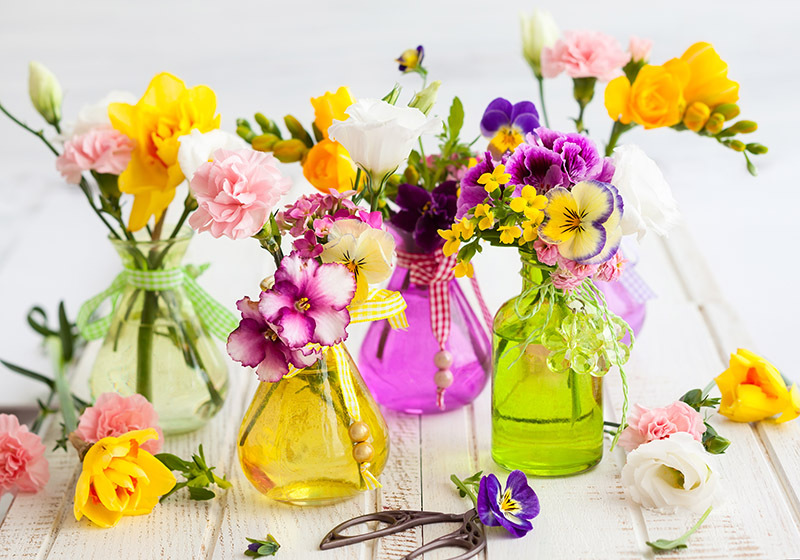Discover These 8 Little-Known Secrets About Sunflowers
Sunflowers have long captivated gardeners, artists, and nature lovers with their radiant beauty and towering stems. But behind their cheerful facade lies a fascinating world of sunflower secrets that many people have never heard about. Whether you're a hobbyist gardener seeking new insights or a curious reader, get ready to be amazed by these little-known sunflower facts that will transform the way you see this iconic summer flower. If you think you know everything about sunflowers, read on -- some of these may surprise you!
1. Sunflowers Track the Sun -- But Only When They're Young
Most people have heard that sunflowers follow the sun, a behavior scientifically termed heliotropism. What's less known is that this phenomenon is unique to their youthful stage. As sunflower plants grow, their buds and young flower heads actively tilt throughout the day to face the sun, maximizing photosynthesis.
- Daytime Movement: Young sunflower heads track the sun from east to west, then return to face east overnight.
- Mature Sunflowers: Once flower heads bloom, the stalk thickens and they stop moving, typically locking into an east-facing direction.
Why east? Research suggests that east-facing blooms attract more pollinators and heat up faster, which can aid in seed development and maximize pollination efficiency.
2. Sunflowers Are a Natural Soil Cleanser
One of the most remarkable sunflower secrets is their ability to purify contaminated soils. In a process known as phytoremediation, sunflowers are used to extract toxic substances such as lead, arsenic, and radiation from the ground. After the Chernobyl nuclear disaster, vast fields of sunflowers were planted to help extract radioactive elements from the soil.
- Sunflowers absorb heavy metals and toxins through their roots.
- They store contaminants in their leaves and stems, making them nature's own "soil scrubbers."
This impressive trait makes sunflower varieties a sustainable choice for ecological restoration projects worldwide.
3. Sunflowers Come in Dozens of Colors and Shapes
When most people picture a sunflower, they imagine a bright yellow bloom with a dark brown center. However, sunflower diversity is far greater than you might expect.
- Color Range: Sunflowers are available in shades of orange, red, burgundy, cream, and even purple.
- Variety of Shapes: Some sunflowers have ruffled, fluffy petals, while others feature multi-branching stems loaded with petite blooms.
- Popular Varieties: Explore unique types like 'Moulin Rouge' (deep red), 'Teddy Bear' (fluffy yellow), and 'Lemon Queen' (pale yellow).
Whether you're looking for a classic statement or an unusual display for your garden, sunflowers offer a wide palette of colors and forms for every landscape. Plant these lesser-known varieties and dazzle your neighbors with your floral expertise!
4. The Sunflower Is Actually Hundreds of Tiny Flowers
Did you know? What appears to be a single sunflower head is in reality made up of up to 2,000 tiny individual flowers, collectively known as a composite flower or inflorescence. Each little "floret" at the center of the sunflower can develop into a seed after pollination.
- The outer yellow "petals" are called ray florets -- each one is a modified flower.
- The dark central disk consists of disk florets, which contain the reproductive organs and are critical for seed production.
This unique flower structure not only makes sunflowers an incredible sight but maximizes their attractiveness to pollinators like bees and butterflies, ensuring sunflower reproduction and survival.
5. Sunflowers Have Deep Historical and Cultural Roots
The history of sunflowers stretches back thousands of years. Native to North America, sunflowers were domesticated around 3000 BC by indigenous peoples, who used them as a valuable food, oil source, and even in spiritual ceremonies.
- Native Americans: Used sunflower seeds for food, dyes, and medicine.
- European Adoption: Spanish explorers brought the sunflower to Europe in the 16th century, where it gained popularity as an oil crop and ornamental plant.
- Cultural Symbolism: In many cultures, sunflowers symbolize loyalty, adoration, and vitality, thanks to their sunny appearance and strong stature.
From ancient fields to Van Gogh's iconic paintings, the sunflower has left an indelible mark on both agriculture and art -- truly a flower with a story.
6. Some Sunflowers Reach Astounding Heights
Sunflower growth can be truly impressive -- with the right conditions, some varieties tower overhead like living giants. While the typical garden sunflower might grow between 5 to 10 feet tall, certain types have shattered world records.
- The tallest sunflower on record stood at a jaw-dropping 30 feet, 1 inch (9.17 meters).
- Giant Russian and Skyscraper varieties are popular choices for gardeners seeking impressive height.
Tips for growing tall sunflowers:
- Plant in full sun -- at least 6-8 hours of direct sunlight daily
- Provide rich, well-draining soil with plenty of compost
- Keep soil consistently moist as giant sunflowers are thirsty plants
- Stake your sunflowers as needed to support their rapid growth
Cultivate these sunflower giants in your own yard and become the envy of your neighborhood!
7. Sunflower Seeds Are Nutritional Powerhouses
Sunflower seeds (also called "sunflower kernels") are more than just a snack at baseball games. They're packed with nutrients, making them a valuable addition to a healthy diet.
- Rich in vitamin E, magnesium, and selenium
- High in protein and healthy unsaturated fats
- Loaded with antioxidants, which may protect against chronic diseases
- Source of phytosterols -- plant compounds that help lower cholesterol
- Available as roasted seeds, sunflower butter, and cold-pressed sunflower oil
Because of their nutritional content, sunflower seeds are increasingly popular in vegetarian and vegan diets. Add them to salads, yogurts, baked goods, or enjoy them solo as a tasty, wholesome snack.
8. Sunflowers and the Fibonacci Sequence
The last -- and perhaps most magical -- fact about sunflowers lies in the mathematical wonders of their design. If you peer closely at the center of a sunflower head, you'll see two spirals radiating outward, composed of the tiny disk florets. The number of spirals in each direction is typically a Fibonacci number, reflecting a stunning example of mathematics in nature.
- The Fibonacci sequence (1, 1, 2, 3, 5, 8, 13, 21, 34...) also appears in pinecones, shells, and hurricanes.
- Sunflower seed arrangement optimizes packing and sunlight exposure.
This perfect pattern is not just beautiful -- it helps sunflowers pack the maximum number of seeds into the smallest possible space, maximizing reproduction. Next time you see a sunflower, take a moment to appreciate the natural artistry embodied by this extraordinary plant!


Why You Should Grow and Appreciate Sunflowers
Beyond their beauty, these sunflower secrets make it clear that sunflowers are much more than just a garden staple. Their ecological, nutritional, and aesthetic value are rarely matched in the plant world. Sunflowers are easy to grow, support pollinators, clean soil, and even offer delicious seeds for you to enjoy.
Growing your own sunflowers can be a rewarding experience, whether you choose compact varieties for pots or giant ones for your backyard. With minimal care, you reap the rewards of color, wildlife, and sustainability.
Essential Tips for Gorgeous Sunflowers
- Planting: Sow seeds directly in spring, after the last frost. Space taller varieties at least 12 inches apart.
- Sun: Ensure a south-facing spot with full sunlight exposure.
- Soil: Enrich with compost before planting. Sunflowers prefer loose, well-draining soil.
- Water: Keep soil moist but not waterlogged, especially as seedlings establish.
- Support: Stake tall varieties to prevent toppling from summer winds.
Pro tip: Harvest dry sunflower heads before the birds beat you to the seeds!
Conclusion: Embrace the Hidden Wonders of Sunflowers
The next time you spot a sunflower basking in the sunshine, remember that it's more than just a pretty face in your garden. From soil restoration to mathematical marvels, sunflowers pack a world of mystery, utility, and inspiration within their golden petals. By discovering these eight little-known secrets about sunflowers, you're not only unlocking their beauty but also their immense value for people and the planet.
Ready to grow your own sunflowers or simply admire them with new eyes? Let these fascinating facts inspire your next gardening project, art creation, or stroll through a field of these radiant legends.
- Try planting a new variety this season and watch as your garden transforms into a colorful, pollinator-friendly paradise.
- Share these fun sunflower facts with friends and family -- you might just inspire a new generation of sunflower enthusiasts!
Sunflowers are nature's way of reminding us that there's always more to discover beneath the surface. Go ahead -- let your curiosity bloom!
